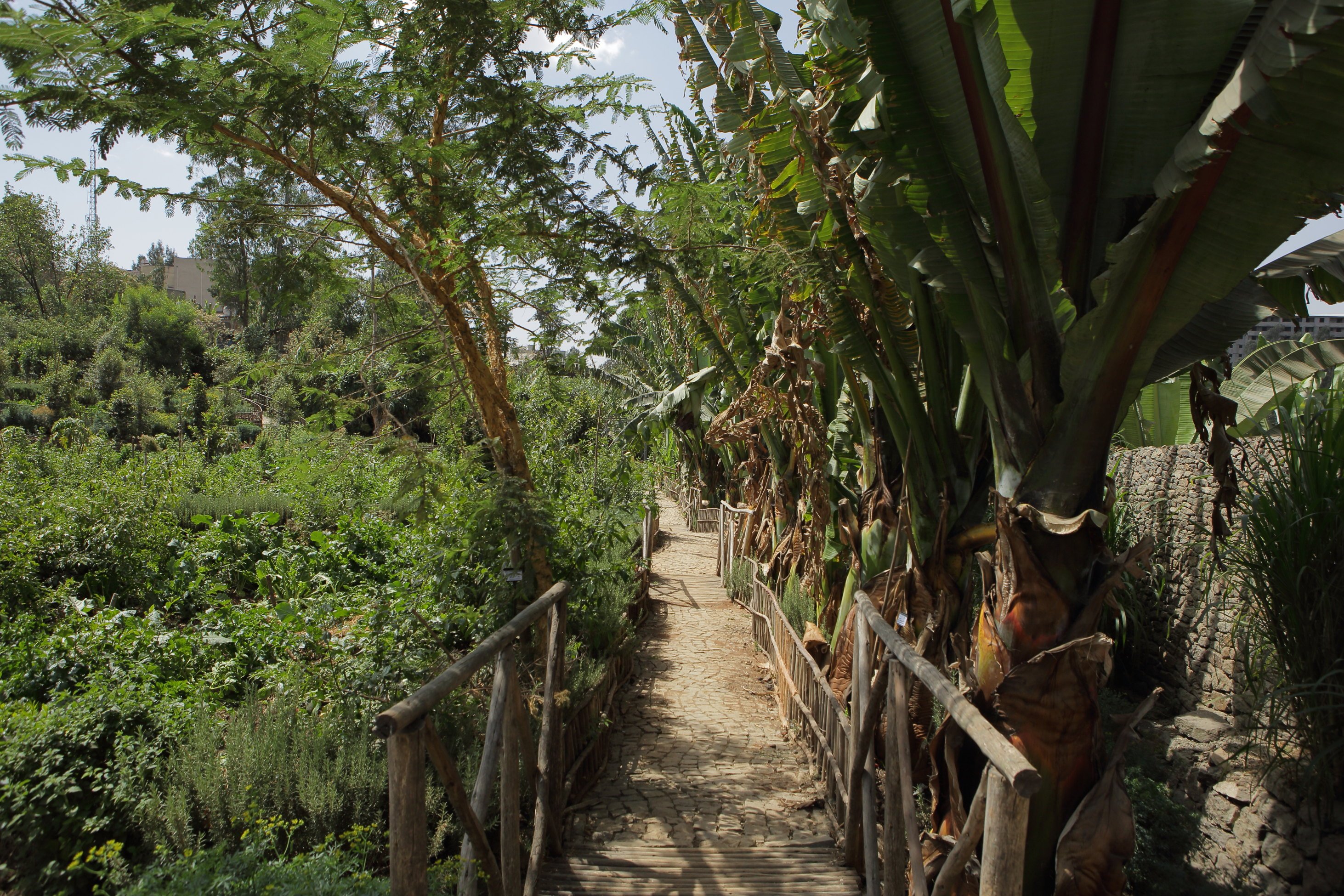
A museum made of mud and straw has opened its doors in Addis Ababa, the capital city of Ethiopia.
When the Zoma Museum’s co-founders, curator Meskerem Assegued and architect Elias Sime, decided to build a museum in their home city 20 years ago, they knew they didn’t want it to be just another brick-and-mortar building with statement architecture. “As high-rise concrete and glass buildings are crowding the city with fewer and fewer green spaces, Elias and I felt strongly [about building] a large museum with huge garden where city dwellers can be connected to nature,” says Assegued, who is the museum’s director as well as an anthropologist.
To that end, the Zoma Museum, which opened its doors on March 23, is a low-lying, eco-sensitive arts center with farming plots, herb gardens, grazing animals, and traditional Ethiopian houses for artist residencies, workshops, and exhibitions. A small family of cows lives in an on-site stable, their dairy production supervised by a previous landowner. In short, it’s a haven.
Visitors to the museum “come to experience the sources of food,” which is cultivated on site at Zoma, Assegued says. It is both a literal source of nutrition and a symbolic one aimed at providing Ethiopians an alternate view of how to live in the increasingly crowded city. “Most children don’t know where milk comes from, so they come to see how cows are milked or smell the aroma of herbs. It is all about life and love.”
Photo: Michel Temteme, courtesy of Zoma Museum
The curators have been steadily buying up land in Addis Ababa, a city of almost 3 million, plot by plot for more than four years. Sime, the project’s architect, worked with a team of masons to build the several incredible houses that populate the grounds. The huts are based on traditional Ethiopian structures, using an ancient indigenous techniques that have been re-interpreted for a contemporary institution. Each exterior wall is hand designed with psychedelic carved patterns and built with wattle and daub, a historic building material that mixes sand, clay, straw, and animal dung.
In an effort to make the institution as environmentally friendly as possible, the Zoma Museum, which is located in a populated suburb, developed a unique water system that helps it avoid reliance on Addis Ababa’s municipal pipe system. This is part of a broader vision to synthesize art with the land, giving Zoma the feeling of being in a constant state of amelioration, maintenance, and renewal.
Photo by Michel Temteme, courtesy of Zoma Museum
Nearby, artists workshops are already ongoing, and on display is an installation by Sime, who is also an artist represented by James Cohan Gallery in New York. There is a so-called “bridge residency,” in which artists and architects are invited from different parts of the world to build a bridge on the property; the only restriction is that it has to be structurally solid.
Sime and Assegued are also currently focused on another kind of sustainability: creating a foundation to support the privately-funded museum in the future.